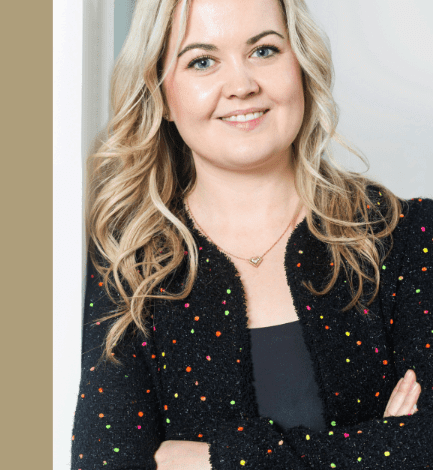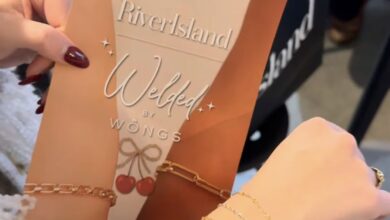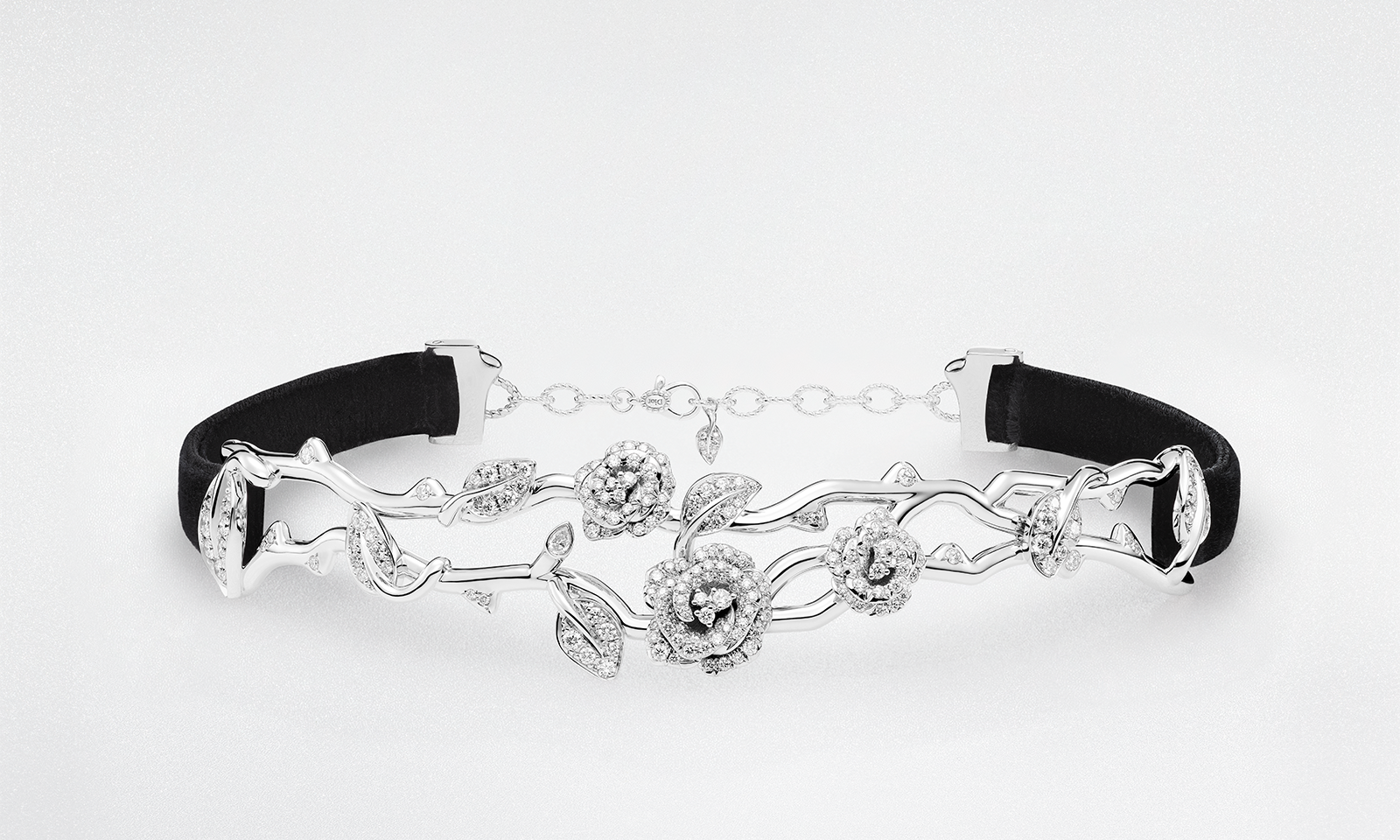Poppy Elder on trends shaping the bespoke engagement market
Exclusive insights from 77 Diamonds show a 28.8% increase in engagement ring sales from 2022 to 2024, fueled by the post-pandemic wedding surge. Poppy Elder, founder of the eponymous jewellery brand, discusses how the post-pandemic surge in engagement ring sales has driven the bespoke market to evolve to meet shifting customer preferences

Register to get 1 free article
Reveal the article below by registering for our email newsletter.
Want unlimited access? View Plans
Already have an account? Sign in
Engagement ring sales have grown by 14% annually, driven by a resurgence in marriages that has reversed years of decline in the UK, according to a new analysis by online diamond retailer 77 Diamonds. Exclusive insights from 77 Diamonds suggest that this post-pandemic wedding surge has continued since 2022. As a result, engagement ring sales between 2022 and 2024 have increased by 28.8%.
This growth has positioned the UK among Europe’s fastest-recovering countries in terms of marriage rates. In fact, further analysis of European crude marriage rates by 77 Diamonds found that the UK’s annual increase of 18% means it has seen one of Europe’s largest post-pandemic marriage booms, ranking 7th behind Luxembourg (27%), Portugal (25%), the Netherlands (25%), Sweden (24%), Belgium (20%), and Spain (19%). However, despite the overall growth, customer preferences are evolving as more people look for rings that feel as distinctive as their relationships.
Poppy Elder, a third generation jeweller and founder of eponymous jewellery brand, has witnessed firsthand how this surge in engagement ring sales has influenced her clients’ preferences when it comes to bespoke engagement rings.
She says that while the classic solitaire remains by far the most popular choice, one of the biggest concerns for clients is finding the right balance between quality and size within their budget. “This tends to be the priority for most buyers. When opting for a bespoke engagement ring, getting expert advice on the best combination of colour and clarity is key to ensuring they get the best value for their money. In terms of design, timeless and classic styles continue to dominate,” she explains.
Elder also points out that while younger generations are redefining marriage on their own terms, she remains committed to creating engagement rings that reflect both uniqueness and tradition. “I specialise in designing unusual engagement rings with different diamonds and sapphires, but I intentionally stick to stones that people are familiar with and feel comfortable choosing,” she explains.
She adds that while clients are eager for something distinctive, they also seek designs that are “timeless and enduring.” As Elder puts it, “An engagement ring is a significant investment, and it’s important that it remains special and loved for years to come.”
For Elder, the key is balance. “The key is striking the right balance—making it personal and unique while ensuring it doesn’t feel too trend-driven,” she shares. She suggests that subtle customisations, such as a distinctive setting style, hidden engravings, or intricate details beneath the stone, offer a way to add individuality without sacrificing the timeless appeal.
Talking more about her specialty of crafting unusual engagement rings, Elder states that everyone wants to represent their relationship in a unique way. “That’s where the classic meets the twist,” she says. “The design is simple and elegant, but with a distinctive touch such as a unique diamond cut or a pop of colour, such as parti sapphires. This blend allows for classic designs with a personal flair.”
Elder’s Signature Collection is a perfect example of her unusual engagement rings. She divided the Signature Collection into two main categories: bridal and jewellery. For the bridal collection, she currently offers two platinum diamond engagement ring and wedding ring sets, designed to complement each other.
According to Elder, they’re “classic, understated, and all about the diamond”. One set features a rose-cut diamond with a matching rose-cut diamond wedding band, while the other includes a step-cut oval diamond with a matching half-moon diamond wedding band. She says: “The half-moon diamond wedding band tends to get the most inquiries because of its scalloped edge, which fits beautifully against any engagement ring. The scalloped side has a lace-like effect, adding a soft touch to the overall design.”
As for the other pieces that attract attention, the parti sapphires are definitely a standout, Elder highlights. The variety of colours in these stones is unique, and many people are “intrigued by them at first because they’re not familiar with them,” she says. “But once I mention they’re sapphires, clients immediately trust the quality, as they recognise the value and prestige of sapphires.”
This desire for personalisation and distinctive designs aligns with the growing influence of social media on engagement ring trends. While Elder notes that celebrity influence isn’t a major factor in her designs, social media platforms like Instagram and Pinterest play a significant role in how people research and choose engagement rings. “Often, they’ll find inspiration through posts or pins, which they might then send to their partner as a hint,” she says. Many of Elder’s clients come to her with images or styles they’ve seen on social media, seeking to surprise their partner with a custom ring inspired by what they’ve shared online.
After her clients share their rough idea of what they want and their budget, Elder offers them three or four options. She shows them the biggest stone they could afford, the best quality for their budget, and a few other alternatives. This process usually takes a week or two to narrow down the right stone.
Next, she moves on to hand-drawn sketches, which she often shares via WhatsApp, as many clients prefer the convenience of quick back-and-forth communication through the app. “This allows them to ask questions they might otherwise consider too minor for an email or phone call, making it easier to finalize the design. Once they’re happy with the sketches, we move to the CAD phase, where they can see realistic digital images of the design,” she explains.
For clients who aren’t completely sure or want to see it in physical form, she creates a wax model, although this is less common since the CAD images are already lifelike. Once everything is confirmed, the final piece typically takes about four to five weeks to be ready.
Jewellery-making is deeply personal for Elder, who oversees every step of the process in her workshop in the Jewellery Quarter. “It’s just me involved in every piece, ensuring every detail is just right,” she says.
As a third-generation jeweller, jewellery has surrounded Elder her entire life, which has undoubtedly influenced my designs. Her grandparents started a metal casting company in the 1950s. It allowed jewellers to use lost wax casting to create their jewellery into repeatable items using wax moulds, which later grew into a jewellery manufacturing business. She then joined the business after her A levels and spent 14 years learning every aspect of jewellery manufacturing and retailing.
Growing up in the industry, Elder witnessed how jewellery fashion has evolved over the years, and that experience makes her less likely to be swayed by passing trends. She says: “I’ve had clients come to me who no longer love their engagement ring because it has gone out of style, or they’ve ended up disliking a wedding band that was once fashionable. Therefore, I want to ensure that the pieces I create are timeless, so my clients can enjoy them for years to come, without worrying about whether they’ll fall out of love with them.”
In recent years, the growing popularity of lab-grown diamonds has sparked a sense of uncertainty in the jewellery market, according to Elder. “As more producers flood the market, prices have dropped significantly,” she explains. This surge in production has created confusion among consumers, who are now bombarded with conflicting messaging from both lab-grown and natural diamond manufacturers. “Each side claims their product is superior,” Elder notes, leaving buyers unsure of where to turn for clarity on the true value of their investment.
“I’m happy to provide clients with the information and answer any questions they have. However, when it comes to engagement rings, most clients choose natural diamonds. Since an engagement ring is such an emotional and sentimental purchase, they tend to lean toward something that feels more authentic,” she states.
The clients who choose lab-grown diamonds typically do so for reasons other than engagement rings. For instance, Elder had a client who already had an engagement ring but couldn’t afford a larger diamond at the time of their engagement. For Christmas, her partner let her design a second ring. She decided to go with a lab-grown diamond because it fit her budget. “In these cases, there’s less emotional attachment, so clients are more comfortable choosing lab-grown options. But for engagements, people generally prefer the natural diamond,” she explains.
However, Elder also notes that choosing an engagement ring can be overwhelming for couples, especially with the amount of conflicting advice on whether to choose a natural or lab-grown diamond, or what colour and clarity to go for.
She states that it’s essential for couples to gather as much information as possible, but ultimately, they should focus on what works best for them, not be swayed by others’ opinions on what’s “ideal.”
She recommends: “A unique, custom-made ring allows them to choose the perfect size, color, and clarity according to their personal preferences. Some may prioritise size, while others may seek perfection and clarity, envisioning the ring as a future heirloom. It’s important for couples to prioritise what feels right for them, rather than being influenced by a salesperson.”
Although Elder isn’t swayed by fleeting trends, she notes that there are two main trends that are emerging in the bespoke engagement rings market. “First, minimalist, classic styles continue to be popular, but people are looking for ways to make them unique. Opting for more unusual diamond cuts, such as a different shape than the typical round, princess, or oval, is a trend that will likely grow, especially with social media showcasing alternative options,” she states.
Secondly, Elder observes that alongside the ongoing debate between lab-grown and natural diamonds, there will be an increased demand for coloured gemstones, particularly those that are undeniably natural. “These stones may not always be perfectly clear, but their personality and authenticity will appeal to customers who appreciate the uniqueness of a genuine natural stone,” she explains.
Finally, Elder has observed that younger clients are seeking pieces they can wear daily, avoiding the overload of excessive jewellery. “I think there are several factors at play here,” she explains.
“Cost is obviously a significant consideration when it comes to buying jewellery. However, I also have younger clients who tell me they have a gold-plated necklace they wear every day and love, but it’s starting to wear down. They want to replace it with a solid gold piece, so they don’t have to worry about the plating coming off. It comes back to classic designs—something they’ll be happy to wear at 18 and still love when they’re 70.”







